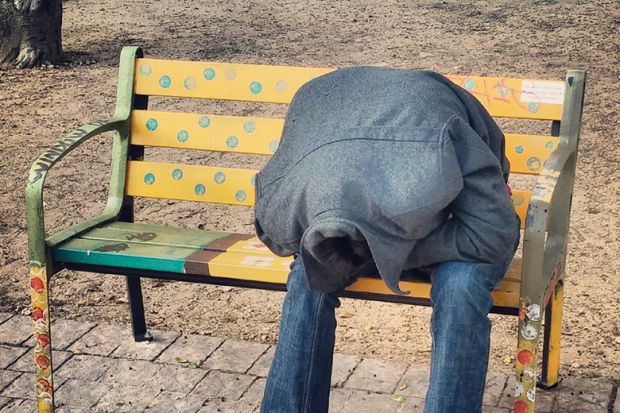An anthropologist who had the unenviable task of sitting through academics’ meetings and reading their email chains to find out why they fail to change their teaching styles has come to a surprising conclusion: lecturers are simply too afraid of looking stupid in front of their students to try something new.
Lauren Herckis was brought in to Carnegie Mellon University to understand why, despite producing leading research into how students learn best, the institution had largely failed to adopt its own findings.
For example, one of the university’s online courses in statistics, which has been shown to be “incredibly effective at teaching students in half the time”, was not adapted by the statistics department for use on campus, said Richard Scheines, dean of the department of humanities and social sciences. “This is a source of real frustration,” he told the Global Learning Council Summit 2017 in Berlin on 29 June.
Dr Herckis observed academic bureaucracy up close in meetings and through emails for more than a year, and tested lecturers’ attitudes through surveys and interviews.
She followed the progress of four projects to improve teaching – such as the introduction of a test to assess students’ strengths and weaknesses before starting their courses – two of which failed.
One of the stumbling blocks, she found, was that ”a desire to get good [student] evaluations posed a risk to their willingness to innovate”.
But an even stronger source of inertia was the need to hang on to their “personal identity affirmation” – in other words, to avoid appearing stupid in the lecture hall. One academic interviewed by Dr Herckis said that their “number one challenge” was to make sure that they were “not an embarrassment to yourself in front of your students”.
Dr Herckis also found that many academics clung to a “very strong” idea of what constituted good teaching that they had often inherited from their former professors or even parents, even if other evidence was available. One interviewee told her that, above all, he wanted to emulate an inspiring lecturer he had been taught by in 1975.
“When our gut tells us to do one thing and an article tells us another,” Dr Herckis told delegates, it is very difficult to change behaviour. Another issue was that faculty were much more likely to be more enthusiastic about making a change that they had come up with by themselves, rather than adopting something tried and tested by others.
Search our database for the latest global university jobs
With universities in many countries under pressure to improve their teaching quality, the project could be of interest to other institutions seeking to overturn ineffective teaching methods. Professor Scheines argued that higher education needed to invest far more in similar anthropological projects to work out how change actually happened. “We need ears and eyes telling us what’s happening on the adoption,” he said.
About 20 years ago, clinical medicine created an entire field of “implementation science” to check whether doctors were adopting best practice, and higher education now needed to do the same, he argued.
In line with the project results, Carnegie Mellon lecturers would be showered with “love” and told not to “worry if students hate you for a semester” if they experimented with new ways of teaching, he said.
Register to continue
Why register?
- Registration is free and only takes a moment
- Once registered, you can read 3 articles a month
- Sign up for our newsletter
Subscribe
Or subscribe for unlimited access to:
- Unlimited access to news, views, insights & reviews
- Digital editions
- Digital access to THE’s university and college rankings analysis
Already registered or a current subscriber? Login








